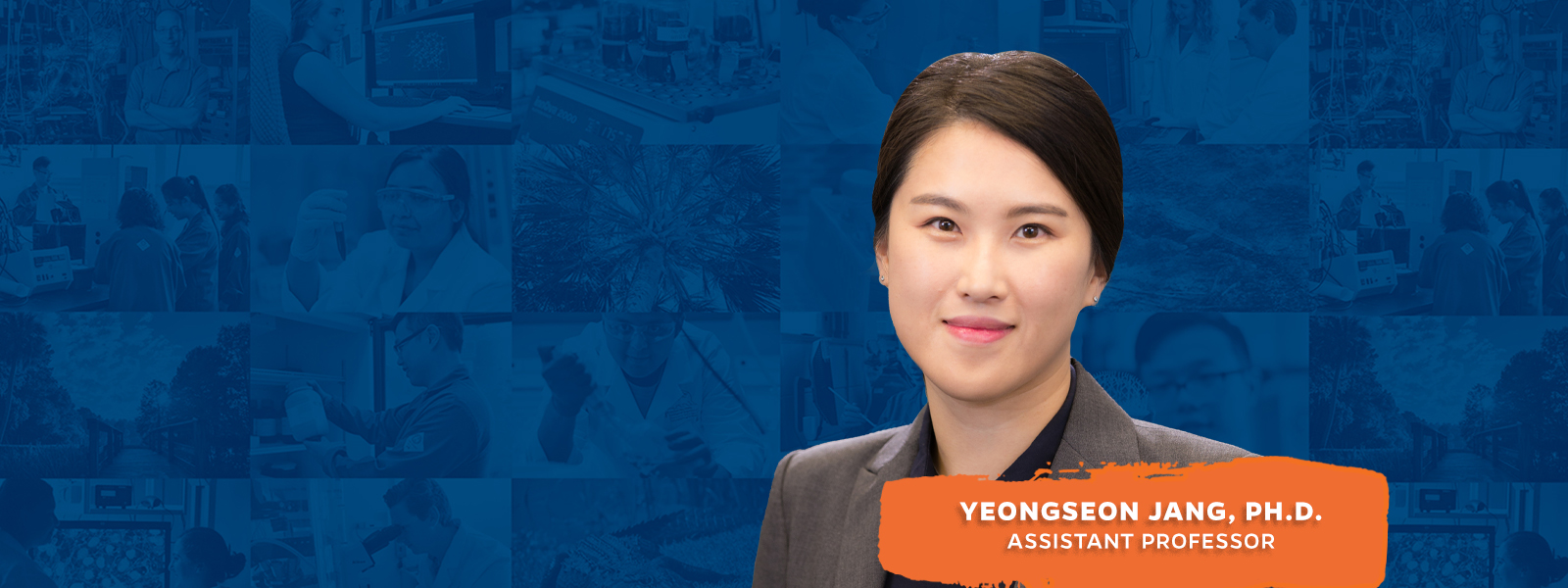Yeongseon Jang, Ph.D., an assistant professor at the University of Florida, Department of Chemical Engineering, has received a National Science Foundation (NSF) grant to design minimal synthetic cells capable of sensing and self-manipulation. In this project, Dr. Jang will collaborate with Carl Denard, Ph.D., an assistant professor in the Department of Chemical Engineering, and Seok Hoon Hong, Ph.D., an associate professor at Illinois Institute of Technology. This project combines the researchers’ expertise in polymer self-assembly, protein engineering, and cell-free synthetic biology for novel synthetic cell development.
“The development of synthetic cells is of great interest to identify the minimal requirements for cellular processes and to enable a range of novel biomedical applications. Among diverse cellular functions, sensing is one of the central functions in how living cells make decisions for biochemical synthesis. Proteins are essential biological building blocks in living cells to mediate cellular functions such as sensing, signaling, and cascade reactions, but mimicking complex cell functions using proteins is still challenging due to difficulties in the incorporation of functionally folded proteins into synthetic cell membranes with precise control. This project aims to create minimal synthetic cells that incorporate sensor proteins at membranes and enable self-manipulation by rational design and engineering of recombinant protein building blocks,” said Dr. Jang.
The researchers will demonstrate these functions by designing sensory fusion proteins that can self-assemble into vesicles and building transmembrane signal transduction systems with intracellular actuation capabilities. This project will create a new type of synthetic cell, self-assembled globular protein vesicles, exhibiting sensory proteins in cell-like membranes with tunable permeability and fluidity. One of the cell-like functions will be demonstrated by integrating synthetic biology and protein engineering into the protein vesicle platforms, which will enable the self-maintenance of the synthetic cells by synthesizing its components autonomously.
“Ultimately, we aim to achieve programmable signal transduction and amplification cascades in protein vesicles upon sensing. Successful integration of cell-free protein synthesis into the protein vesicles capable of sensing will be the stepping-stone to enable the self-manipulation of synthetic cells. New biological and clinical applications could be envisioned for treating diverse human diseases based on manipulating protein functions in minimal cell structure. More importantly, this project will help to address questions on how to leverage synthetic systems for sophisticated biological reactions happening in living cells.” said Dr. Jang.
Outreach activities in this project will help next-generation students design, build, and test controllable protein vesicle platforms for synthetic cells. This project will help to recruit and retain students from minority group (female and African-American students) in STEM at educational levels ranging from K-12 students to postdocs.
The Jang Group works to provide fundamental and practical solutions in developing bio-inspired supramolecular materials made from biomacromolecules. Her lab focuses on understanding intermolecular interactions of block copolymer-like fusion proteins and engineering their self-assembly behavior to make highly controlled supramolecular structures, such as vesicles and nano-patterned thin films. Applications of supramolecular biomaterials made from recombinant fusion proteins, which exhibit target structural, mechanical, and biological properties include synthetic cell membranes, drug delivery vehicles, and antifouling films.
The Denard Group focuses on protein and cellular engineering. His lab develops technologies and methodologies for evolving, leveraging, and profiling the substrate specificity of post-translational modification-enzymes to study life processes, create new chemical biology tools, and design effective protein therapeutics.

